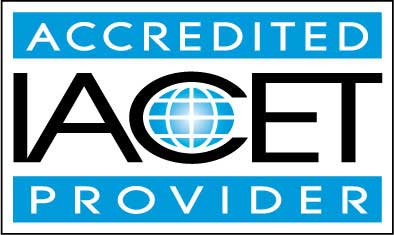Course Description
Welcome to Diabetes 101: Understanding, Diagnosing and Managing. This introductory course regarding the topic of diabetes is designed to offer students a general understanding of what diabetes is, how it's diagnosed and how it's managed. Students will also learn the anatomy of diabetes, the body organs involved, and the different types of diabetes with which a person may be diagnosed.
This course also covers the importance of glucose and insulin and how each affects the overall function of your body. Symptoms of diabetes as well as what to expect when you visit a doctor are included in these lessons. Testing methods commonly used by diabetics to maintain their blood sugar and insulin levels are also explored. Understanding the basic tools a diabetic may need for daily management of diabetes are introduced, as are the different methods many individuals diagnosed with diabetes take in order to adapt their lifestyle to their condition at home, work, or school.
Students of this course on diabetes will learn about the most common types of complications associated with multiple forms of diabetes and the importance of care and infection prevention among diabetics, most specifically the elderly. Pregnant mothers diagnosed with gestational diabetes will understand the importance of obstetrical and post-delivery care, and enjoy some tips and suggestions for healthy living habits before, during and after a planned pregnancy.
Throughout this course, students will also learn the importance of nutrition and diet for optimal management of diabetes symptoms and conditions. We'll explore a number of coping skills that diabetics can utilize to help prevent stress and depression. Finally, we'll wrap up this introductory course on diabetes by offering tips that every individual can take to help reduce their risk of developing the condition, or at the very least, minimize its impact on their lives.
- Completely Online
- Self-Paced
- Printable Lessons
- Full HD Video

- 6 Months to Complete
- 24/7 Availability
- Start Anytime
- PC & Mac Compatible
- Android & iOS Friendly
- Accredited CEUs

Learning Outcomes
- Define the role of the pancreas and its hormones in diabetes management.
- Identify and differentiate between Type 1, Type 2, and gestational diabetes.
- Demonstrate proactive steps for preparing for a doctor's visit by developing a symptom diary and compiling family medical history, effectively communicating potential diabetes symptoms to healthcare professionals.
- Define the symptoms of diabetes that are commonly overlooked, including increased thirst, hunger, and fatigue, and describe their significance for early diagnosis.
- Define glucose's role in the body and its function in energy production.
- Demonstrate how to monitor blood glucose levels using various methods and interpret the results accurately.
- Define the process of blood sugar testing by identifying three main steps: preparation, sample acquisition, and result interpretation.
- Demonstrate the correct usage of a blood glucose monitor and testing strips by successfully completing a self-administered blood sugar test.
- Define and apply personal strategies to manage diabetes through balanced nutrition, consistent exercise, and regular medical consultation, demonstrating improved blood glucose control.
- Identify and incorporate mental health practices and community support mechanisms to enhance emotional well-being and resilience in managing diabetes.
- Identify early signs of diabetic complications such as retinopathy and neuropathy and describe preventive measures through regular monitoring and timely medical interventions.
- Recognize the symptoms and triggers of hypoglycemia and demonstrate effective intervention strategies using fast-acting carbohydrates.
- Recognize symptoms of hypoglycemia and demonstrate appropriate response by administering 10-15 grams of fast-acting carbohydrates within 15 minutes of symptom onset.
- Demonstrate mastery of lesson content at levels of 70% or higher.
Assessment Guide
| Assessment | Points |
|---|---|
| Lesson 1 Review Exam | 20 points |
| Lesson 2 Review Exam | 20 points |
| Lesson 3 Review Exam | 10 points |
| Lesson 4 Activity | 1 points |
| Lesson 4 Review Exam | 20 points |
| Lesson 5 Activity | 1 points |
| Lesson 5 Review Exam | 20 points |
| Lesson 6 Activity | 1 points |
| Lesson 6 Exam | 10 points |
| Lesson 6 Review Exam | 10 points |
| Lesson 7 Review Exam | 20 points |
| Lesson 8 Activity | 1 points |
| Lesson 8 Review Exam | 10 points |
| Lesson 9 Activity | 1 points |
| Lesson 7 Exam | 8 points |
| Lesson 9 Review Exam | 19 points |
| Lesson 8 Exam | 9 points |
| Lesson 10 Review Exam | 20 points |
| Lesson 11 Activity | 1 points |
| Lesson 9 Exam | 10 points |
| Lesson 11 Review Exam | 16 points |
| Lesson 10 Exam | 10 points |
| Lesson 12 Review Exam | 10 points |
| Lesson 11 Exam | 10 points |
| The Final Exam | 52 points |
| Lesson 13 Review Exam | 20 points |
| Lesson 14 Review Exam | 14 points |


